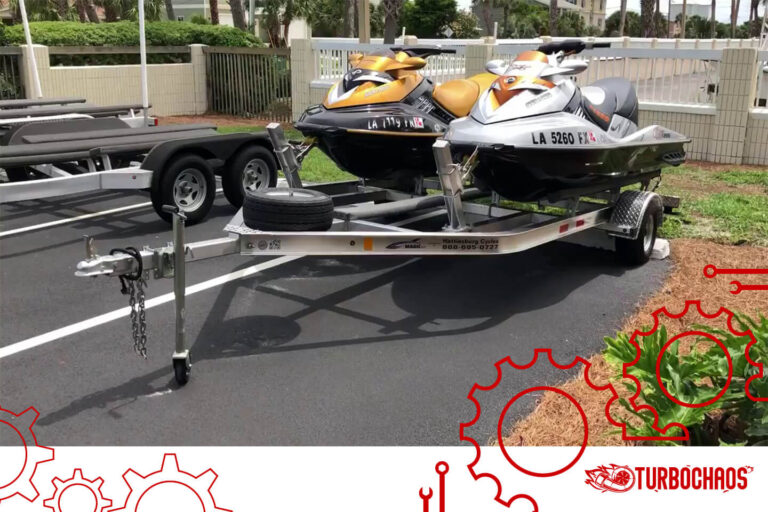Is 3000 Engine Hours A Lot? A Complete Breakdown
When it comes to evaluating the lifespan and performance of heavy machinery, engine hours are a critical metric. So, the question arises Is 3000 Engine Hours A Lot? This question often arises among professionals and enthusiasts in industries like construction, agriculture, and marine. Understanding the implications of engine hours is essential for maintenance, resale, and operational efficiency.
Key Takeaways
- 3000 engine hours is generally considered a significant amount for heavy machinery.
- The impact of these hours varies based on factors like maintenance, usage type, and engine make.
- Regular maintenance can significantly extend the lifespan of an engine beyond 3000 hours.
- Comparisons with similar machinery and industry standards provide valuable context.
Is 3000 Engine Hours A Lot?
Yes, 3000 engine hours is generally considered a lot for most types of machinery and vehicles, indicating significant use and potential wear. However, the actual impact on the engine’s condition can vary depending on factors like maintenance, usage type, and the specific type of engine.

Understanding Engine Hours
What Constitutes Engine Hours?
Engine hours refer to the total amount of time an engine has been operating. Unlike mileage, which measures distance, engine hours reflect the actual running time of the engine. This measure is crucial in sectors where machinery operates at a constant location or at varying speeds, making mileage an unreliable metric.
The Significance of 3000 Engine Hours
Reaching 3000 engine hours is a notable milestone for any heavy machinery. It often indicates that the machinery has undergone extensive use. However, the implication of this number varies. For instance, 3000 hours on a well-maintained engine in a tractor could be less concerning than on a neglected construction crane’s engine.
Factors Affecting Engine Longevity
Maintenance and Care
The way an engine has been maintained plays a critical role in its longevity. Regular maintenance, including oil changes, filter replacements, and cooling system checks, can significantly extend the life of an engine. A machine that has clocked 3000 hours with impeccable maintenance records might outperform a poorly maintained one with fewer hours.
Usage Intensity and Conditions
The type of work and the conditions under which the machinery operates also impact engine wear. Continuous heavy loading, harsh environments, or irregular operating patterns can accelerate engine wear, making 3000 hours more significant.
Comparing Industry Standards

Average Lifespan in Various Industries
Each industry has its benchmarks for engine hours. For example, in agriculture, 3000 hours might be a mid-life point for a well-maintained tractor engine. In contrast, for marine engines, which often run under more constant and controlled conditions, 3000 hours might be considered less.
Similar Machinery Comparison
Assessing how similar machinery fares at the 3000-hour mark can provide valuable insights. Comparisons within the same brand or model range can indicate how well an engine is likely to perform beyond this point.
The Role of Engine Make and Model
Engine Design and Quality
The make and model of an engine significantly influence its durability. High-quality engines designed for heavy-duty use are more likely to withstand longer hours of operation. In some cases, 3000 hours can be well within the operational capabilities of premium engines.
Historical Performance Data
Looking at historical data and performance reviews of specific engine models can shed light on what to expect. Engines with a reputation for longevity might just be warming up at 3000 hours, while others might be nearing the end of their optimal performance period.
Maintenance Best Practices
Regular Checks and Balancing
Implementing a rigorous maintenance schedule is key to prolonging engine life. This includes regular checks of vital components and balancing the engine to ensure optimal performance.
Proactive Replacements and Repairs
Proactively replacing worn parts and addressing minor issues before they escalate can significantly impact an engine’s lifespan. This approach is particularly important as the engine reaches and surpasses the 3000-hour mark.
Advanced Maintenance Strategies

Predictive Maintenance Techniques
In the world of heavy machinery, predictive maintenance is revolutionizing how we approach engine care. This technique involves using advanced analytics and monitoring tools to predict potential failures before they occur.
By analyzing data trends from engines, especially those approaching or surpassing 3000 hours, operators can anticipate wear and take preemptive action. This method not only extends the life of the engine but also ensures consistent performance and safety.
The Role of Technology in Engine Monitoring
The integration of technology in engine monitoring is a game-changer. Modern engines equipped with sensors and connected to data analytics systems provide real-time insights into their health.
These systems can track various parameters such as temperature, vibration levels, and fuel consumption. For engines with high hours, like those over 3000, this technology is invaluable in identifying issues early and maintaining optimal performance.
Impact of Engine Hours in Different Sectors
Agricultural Machinery
In agriculture, the impact of engine hours varies significantly. For instance, a combine harvester operating in harsh conditions might show more wear at 3000 hours compared to a tractor used for light farm work. Understanding the specific demands of agricultural machinery is crucial in evaluating the true impact of engine hours in this sector.
Construction and Mining Equipment
Construction and mining equipment often face extreme conditions. These machines usually carry heavy loads and operate in challenging environments, which can accelerate wear. Here, 3000 engine hours might indicate a need for more intensive maintenance or even overhaul, depending on the machine’s usage history and environmental exposure.
Economic Implications

Resale Value and Cost-Benefit Analysis
The number of engine hours greatly influences the resale value of machinery. Equipment with lower hours generally fetches a higher price. However, well-maintained machinery with 3000 or more hours can still hold considerable value, especially if it has a record of reliable performance. For buyers and sellers, conducting a cost-benefit analysis, considering the age, condition, and engine hours, is vital in making informed decisions.
Budgeting for Maintenance and Replacement
Businesses must budget effectively for maintenance and potential replacements, especially as machinery ages.
For engines around the 3000-hour mark, allocating funds for more frequent checks and potential part replacements becomes increasingly important. This proactive financial planning helps avoid unexpected breakdowns and downtime, ensuring continuous operation.
Innovations in Engine Design
Advancements in Durability and Efficiency
Engine manufacturers are continually innovating to enhance durability and efficiency. Newer models are designed to withstand longer hours of operation with reduced wear.
These advancements mean that the threshold for what constitutes “a lot” of engine hours is constantly evolving, and 3000 hours may become less significant as technology progresses.
Eco-friendly and Fuel-Efficient Engines
The shift towards eco-friendly and fuel-efficient engines is also reshaping the landscape. These engines are not only better for the environment but often come with design improvements that extend their operational life.
As such, the traditional metrics of assessing engine wear, including the 3000-hour mark, are being reevaluated in light of these technological advancements.
How Many Engine Hours Is Considered High?
Determining when engine hours are considered high largely depends on the type of engine and its typical usage conditions. Generally, for heavy-duty vehicles and machinery like trucks, construction equipment, and agricultural machinery, reaching 3000 to 5000 engine hours is often seen as a significant milestone.

This range is considered ‘high’ as it usually indicates substantial use and wear. However, the condition of the engine at this stage can vary greatly based on maintenance practices and operating conditions.
In industries such as marine, where engines often run at a steady pace and under less variable conditions, higher engine hours (even beyond 5000) may not necessarily indicate excessive wear.
The key takeaway is that while a high number of engine hours can indicate significant use, it’s not an absolute indicator of an engine’s health or remaining lifespan.
How Many Miles Is An Hour Of Idling Equal To?
The correlation between idling and mileage isn’t straightforward, as idling doesn’t equate directly to miles traveled. However, a commonly used approximation by the US Environmental Protection Agency (EPA) is that an hour of idling is roughly equivalent to 25 to 30 miles of driving.

This estimation helps in understanding the wear and fuel consumption associated with idling. It’s important to note that prolonged idling can be hard on an engine, as it operates in a less efficient state compared to traveling at regular speeds.
Therefore, even if idling doesn’t contribute to mileage, it still contributes to engine wear and fuel usage, impacting both the environment and engine health.
How Many Hours Should An Engine Last?
The lifespan of an engine, measured in hours, varies significantly depending on the type of engine, its usage, and maintenance.
For most heavy-duty engines used in commercial vehicles, agricultural machinery, and industrial equipment, a well-maintained engine can last anywhere from 10,000 to 20,000 hours.
In the automotive sector, passenger vehicle engines are typically designed to last for about 150,000 to 200,000 miles, which, when converted to engine hours, equates to approximately 5,000 to 8,000 hours of operation, assuming average driving conditions.
It’s important to emphasize that these figures can vary widely. Engines in well-maintained vehicles and equipment, operated under favorable conditions, can surpass these average lifespans.
Regular maintenance, including timely oil changes, filter replacements, and addressing issues as they arise, is key to maximizing engine longevity.
Conclusion
In conclusion, 3000 engine hours signifies considerable usage, but it’s not a definitive measure of an engine’s remaining lifespan. Factors like maintenance history, usage intensity, engine make and model and industry standards play crucial roles.
A well-maintained engine can surpass this milestone with ease, continuing to offer reliable service. Therefore, while 3000 hours might be a lot, it’s not an absolute indicator of an engine’s health or value.
People Also Ask
Are Newer Engine Models More Durable at High Hours?
Newer engine models often feature advancements in durability and efficiency, making them more capable of withstanding high hours of operation with less wear. Innovations in eco-friendly and fuel-efficient designs also contribute to improved engine longevity and performance.
What Technological Advancements Help in Monitoring Engine Hours?
Modern engines equipped with sensors and connected to data analytics systems provide real-time health insights. These technologies track various parameters such as temperature, vibration, and fuel consumption, aiding in predictive maintenance and extending engine life.
How Does Engine Quality Affect Longevity?
The make and model of an engine significantly influence its durability. High-quality, well-designed engines built for heavy-duty use are more likely to withstand longer hours of operation and maintain performance beyond 3000 hours.
What Maintenance is Crucial as an Engine Reaches 3000 Hours?
As an engine reaches 3000 hours, crucial maintenance includes thorough engine checks, oil and filter changes, cooling system maintenance, and proactive replacement of worn parts. Predictive maintenance techniques and monitoring technology also play a vital role at this stage.
How Do Engine Hours Vary Across Different Industries?
Engine hour significance varies across industries. For instance, in agriculture, 3000 engine hours might be less significant for a well-maintained tractor but more concerning for heavy construction equipment under harsh conditions.
Can Regular Maintenance Extend Engine Life Beyond 3000 Hours?
Yes, regular and proper maintenance can significantly extend the life of an engine beyond 3000 hours. This includes routine oil changes, filter replacements, cooling system checks, and addressing minor issues promptly.

Welcome to the exhilarating world of Matt Rex, a professional car racer turned renowned vehicle enthusiast. Immerse yourself in his captivating blog as he shares heart-pounding adventures, expert reviews, and valuable insights on cars, trucks, jets, and more. Fuel your passion for speed and discover the beauty of vehicles through Matt’s engaging stories and meticulous expertise. Join the ever-growing community of enthusiasts who find inspiration and expert advice in Matt Rex’s blog—a digital hub where the thrill of speed meets the pursuit of knowledge.






![Is The Mazda 2.2 Diesel Engine Reliable? [Answered]](https://www.turbochaos.com/wp-content/uploads/2023/12/Is-The-Mazda-2.2-Diesel-Engine-Reliable-768x423.jpg)
